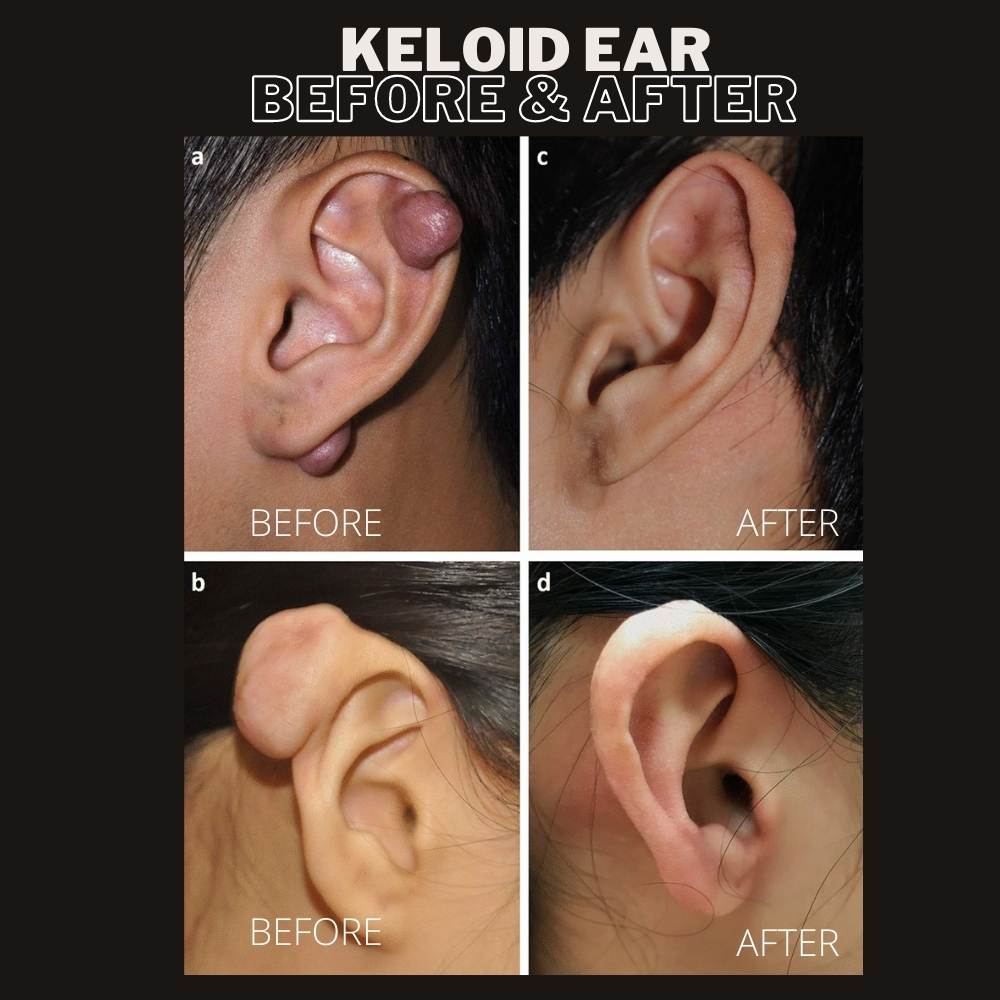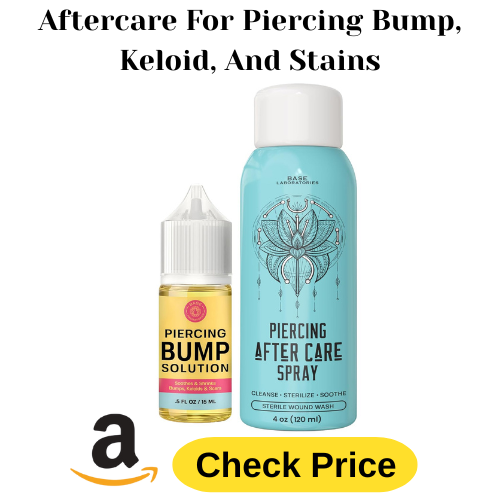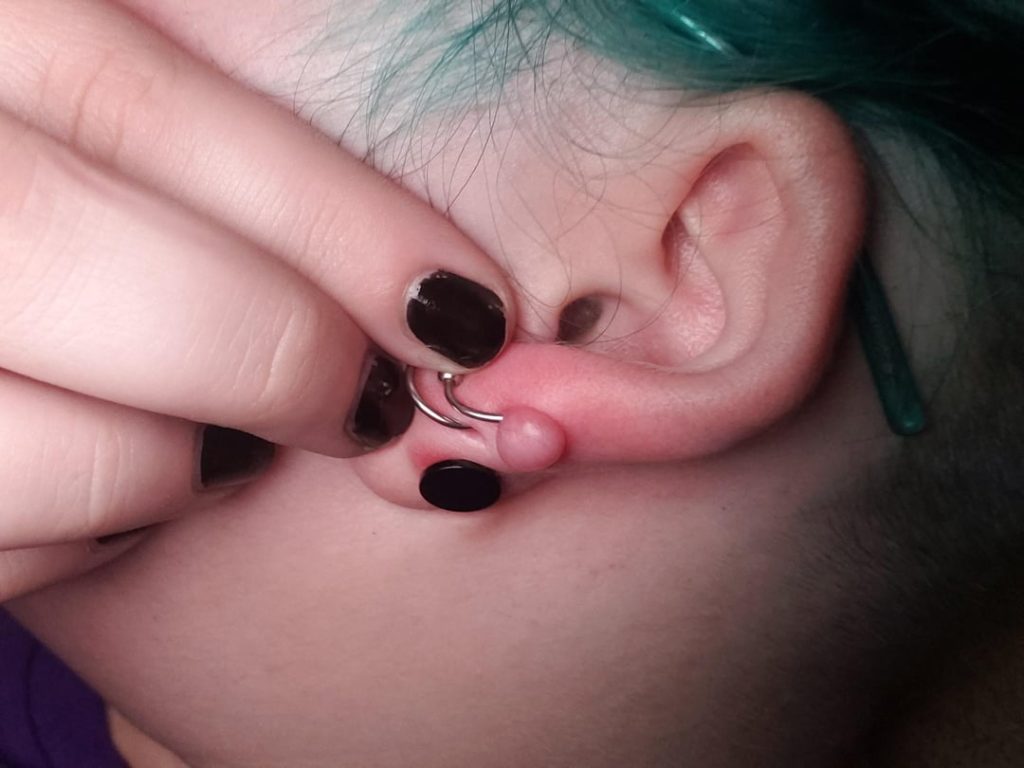Getting a piercing can be exciting. However, sometimes it can lead to a keloid. A keloid is a thick, raised scar. It forms where the skin has healed. Keloids can be itchy and uncomfortable. They may also be unsightly. In this article, we will explore ways to get rid of a keloid on your piercing.
What is a Keloid?
A keloid is a type of scar. It grows bigger than the original wound. Keloids can happen anywhere on the body. They are common on earlobes, chest, and shoulders. Some people are more likely to get them. This includes people with darker skin tones.

Credit: topplasticsurgery.org
Why Do Keloids Form?
Keloids form when the body heals. The healing process goes into overdrive. This makes the scar grow larger. Sometimes, they form after a piercing. Other times, they form after surgery or cuts. Keloids can also be caused by acne or chickenpox.
Signs of a Keloid
How do you know if you have a keloid? Here are some signs:
- Raised, thick scar on the skin
- Itching or tenderness
- Color changes, like red or dark brown
- Growth over time
If you see any of these signs, it may be a keloid. It is best to take action early.
How to Treat a Keloid
There are several ways to treat a keloid. Not every method works for everyone. Here are some common treatments:
1. Home Remedies
Many people try home remedies first. Here are some simple ones:
- Aloe Vera: Apply fresh aloe vera gel. It may help reduce scars.
- Honey: Honey has healing properties. Use it on the keloid.
- Tea Tree Oil: Mix with a carrier oil. Apply it to the keloid.
- Vitamin E Oil: Massage vitamin E oil on the scar. It can help soften it.
2. Over-the-counter Treatments
Some creams are available at stores. Look for silicone gel sheets. They can help flatten the keloid. Apply them as directed. Be patient; it may take time.
3. Medical Treatments
If home remedies do not work, see a doctor. There are stronger treatments available:
- Corticosteroid Injections: A doctor can inject medicine into the keloid. This can help reduce its size.
- Laser Therapy: This treatment uses lasers to flatten the keloid. It can also improve skin color.
- Surgery: In some cases, surgery is an option. A doctor can cut out the keloid.
- Cryotherapy: This method freezes the keloid. It can help shrink it.
Preventing Keloids
Preventing keloids is important, especially if you are prone to them. Here are some tips:
- Keep the piercing clean and dry.
- Avoid touching or playing with the piercing.
- Do not remove the jewelry too soon.
- Use a gentle cleaning solution.
When to See a Doctor
Sometimes, keloids need professional help. See a doctor if:
- The keloid is painful or itchy.
- It grows quickly.
- You are worried about its appearance.
A doctor can help find the best treatment.
Living with Keloids
Living with a keloid can be hard. It may affect your self-esteem. Here are some ways to cope:
- Talk to someone about how you feel.
- Consider joining a support group.
- Focus on the things you like about yourself.

Credit: www.reddit.com
Frequently Asked Questions
What Is A Keloid On A Piercing?
A keloid is a raised scar that forms after skin injury. It can occur on or around piercings.
How Can I Prevent Keloids On Piercings?
To prevent keloids, keep piercings clean and avoid irritation. Use high-quality jewelry and follow aftercare instructions.
What Are Common Treatments For Keloids?
Common treatments include steroid injections, silicone sheets, and cryotherapy. Consult a dermatologist for the best option.
Can Keloids Be Removed Surgically?
Yes, keloids can be removed surgically. However, they may return after surgery.
Conclusion
Getting rid of a keloid on a piercing is possible. There are many options available. From home remedies to medical treatments, you have choices. It is important to act early. Take care of your skin and your health. If a keloid bothers you, consult a healthcare provider. They can help you find the best way to treat it.
Remember, you are not alone. Many people deal with keloids. With the right care, you can manage them effectively.




